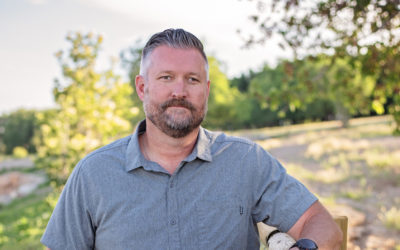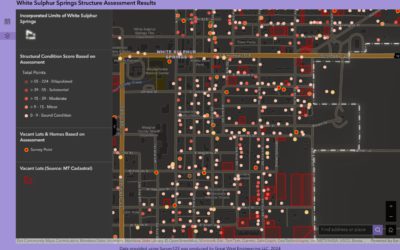Highway 89 west of Browning traverses the Blackfeet Nation, providing a key entrance to Glacier National Park. A wide variety of vehicle types and users are served by this roadway and the needs of these users were not being met by the original 1927 design. The roadway was narrow with sharp curves and few turnouts; a combination of circumstances that posed safety issues. In addition to the inadequate roadway, the diverse vehicle mix resulted in potential safety issues associated with vehicle speed, frequency of stops, and the proximity of bicyclists to vehicles on the roadway.
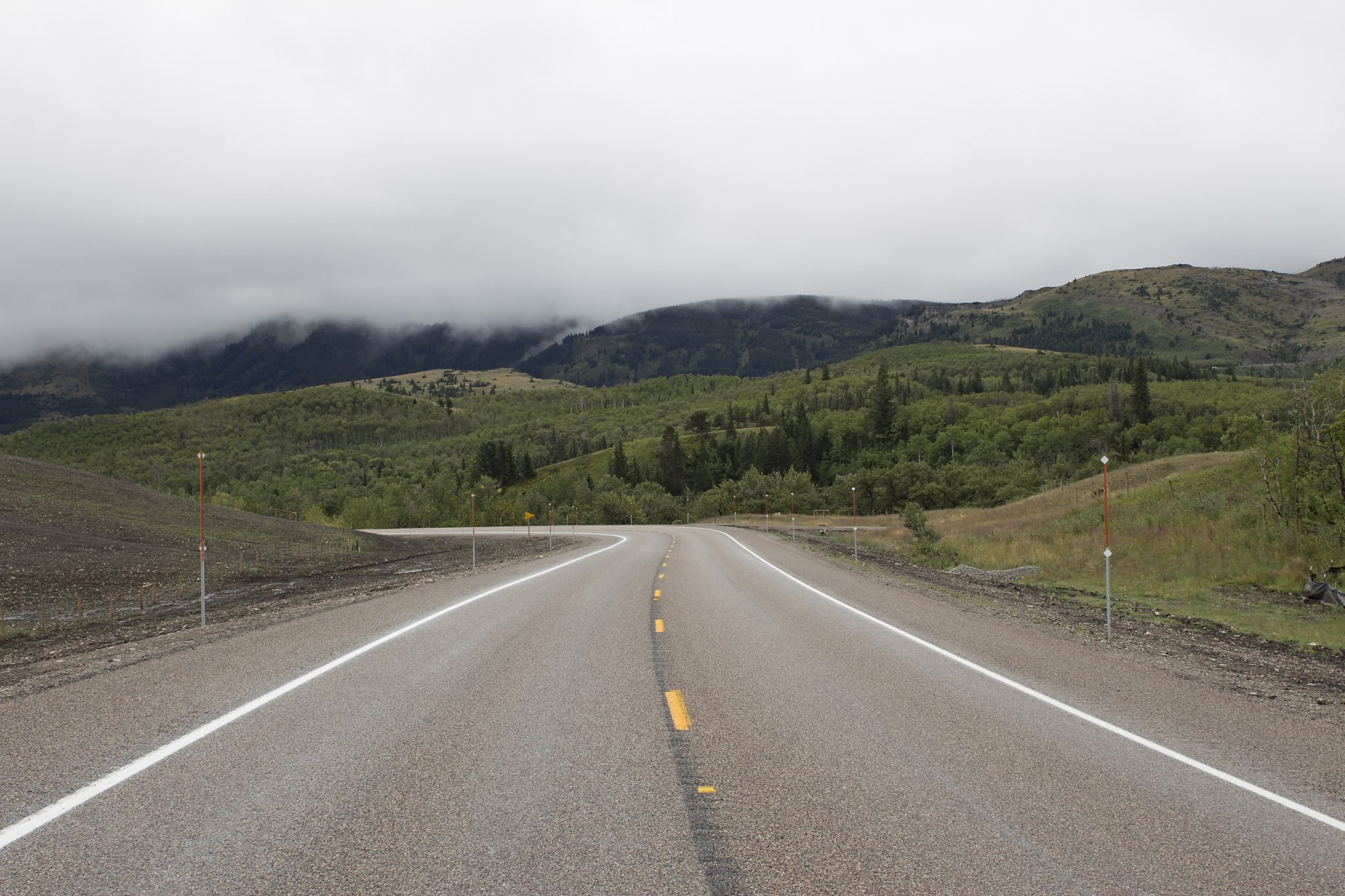
US Highway 89 west of Browning traverses the Blackfeet Indian Reservation, providing a key entrance to Glacier National Park.
Great West Engineering was awarded the design of the third segment of this corridor involving 4.4-miles of road reconstruction including two new bridges, significant earthwork, flood relief culverts, and stream restoration. Great West managed a team of specialty subconsultants who assisted with the planning and design of the project. These included: SK Geotechnical – geotechnical engineering; Atkins – biological resources report; and UMS – subsurface utility investigation. The Montana Department of Transportation provided the LiDAR survey, environmental impact statement reevaluation, wetland mitigation, and right-of-way design.
The completed project improved traffic flow and roadway safety while minimizing disturbance to the numerous Blackfoot Nation cultural sites, adjacent wetlands, and area wildlife. The project provides an appropriate balance between cost efficiency, roadway safety and function, and environmental protection. Striking a balance of these objectives was achieved by the design team as they analyzed numerous roadway routing alternatives. The project improved roadway safety and traffic flow while enhancing the cultural resources and economic opportunities of the Blackfeet Nation.
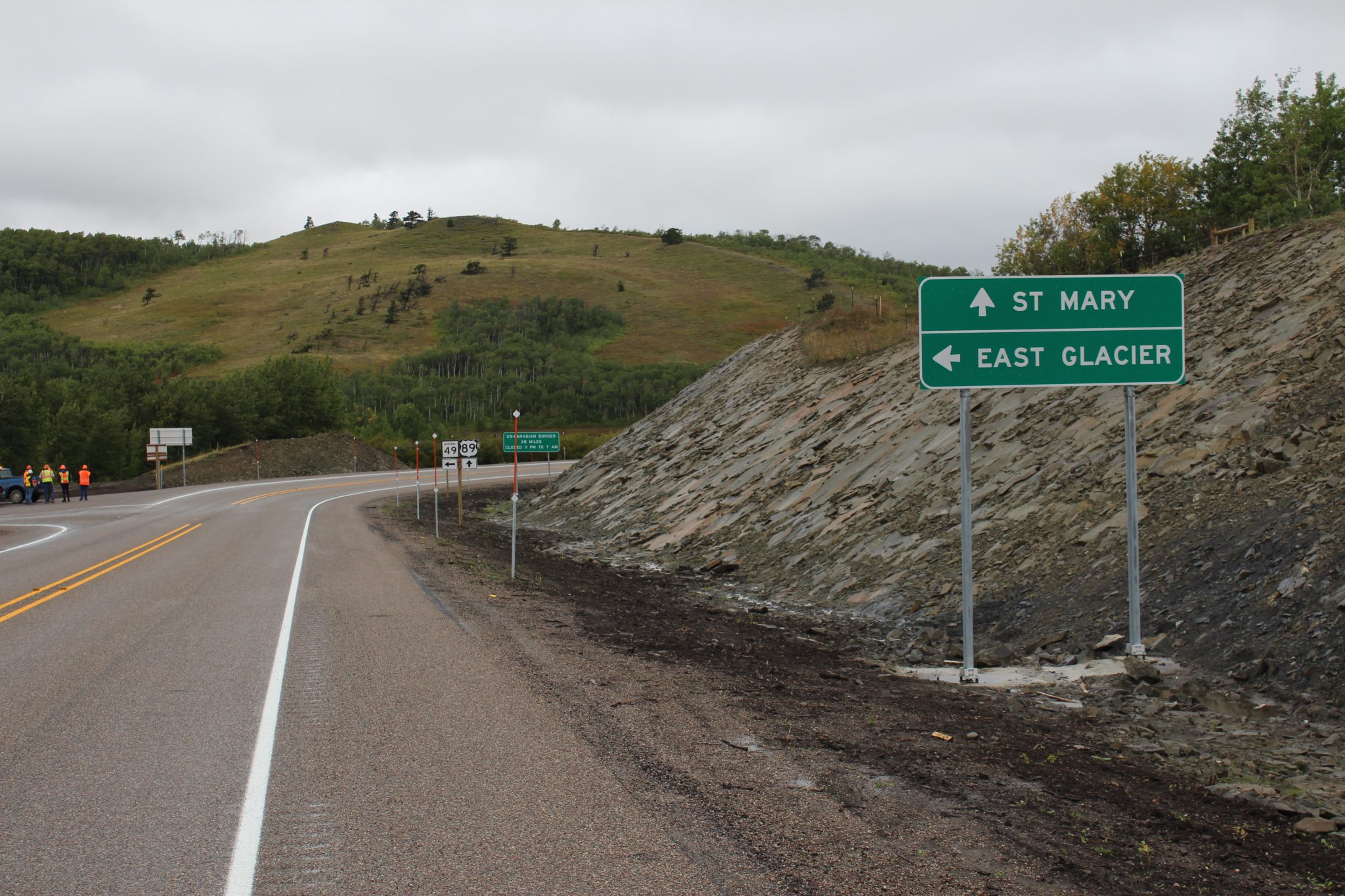
Reconfigured intersection of U.S. Highway 89 and Montana 49 with rock cuts required blasting to improve sight distance.
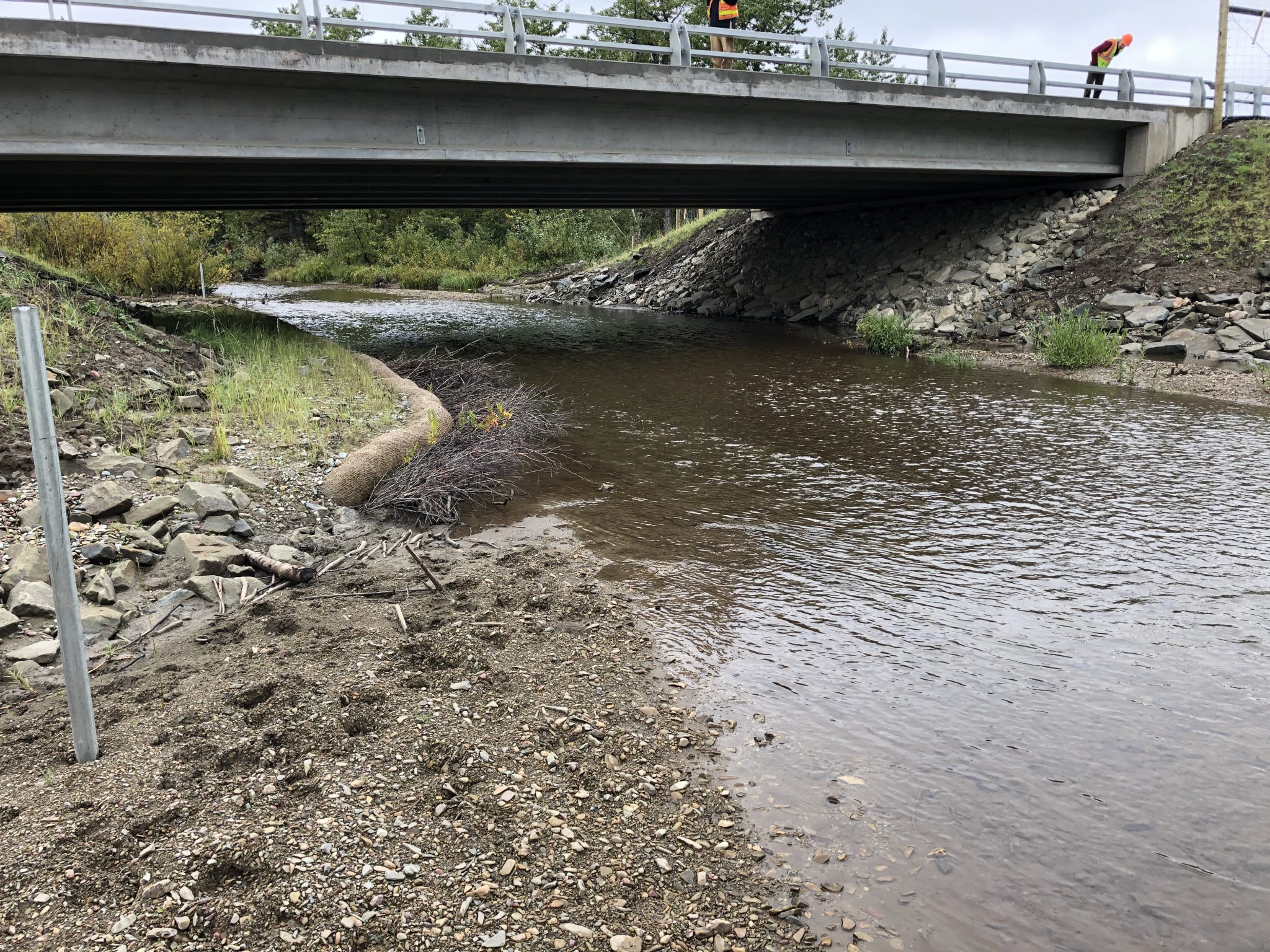
The area under the bridges provides extra vertical clearance for moose and grizzly bears while also providing a naturally functioning stream channel.
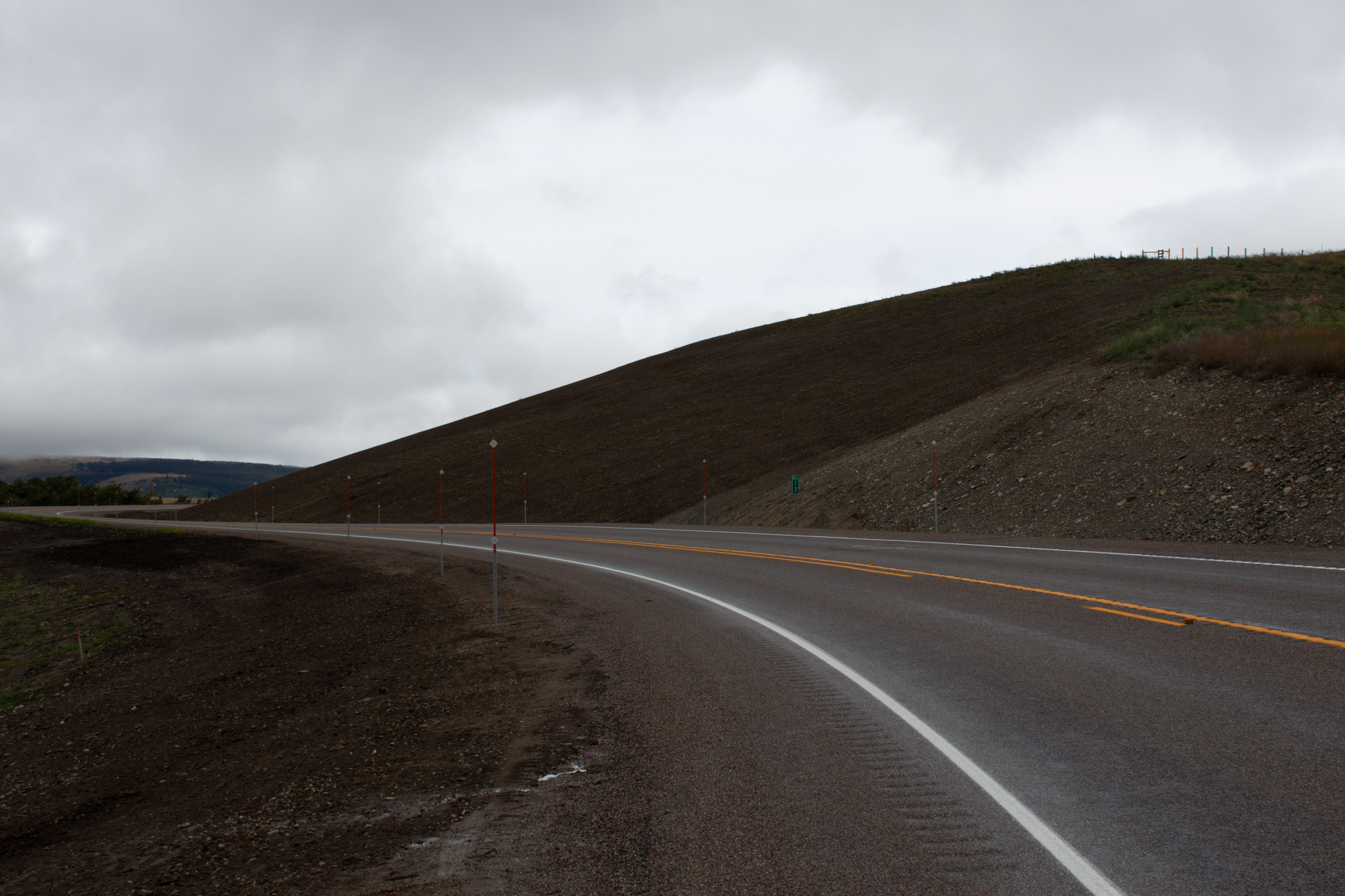
Road alignment constraints included large cuts/fills, streams & wetlands, cultural burial sites, and minimum radius curves.
Over 514,000 cubic yards of material was excavated to construct the new roadway. Geotechnical challenges required innovative techniques to minimize work and protect the wetlands and cultural sites. The area was plagued with poor subgrade soils, shallow groundwater, sandstone formations, and shallow bedrock. Geotextile and special borrow material was used to support the new roadway. Due to the mountainous terrain, consideration was given to steepening the cut slopes to reduce construction costs while minimizing right of way (R/W) acquisition and disturbance of cultural sites. Through a collaborative effort between MDT, Great West, and SK Geotechnical, additional R/W was acquired in geotechnically unstable areas. A landslide activated at one slope during construction requiring crews to lay back the slope into the available R/W. Laying back the slope required removing almost 132,000 cubic yards of additional material. The foresight to acquire the additional R/W eliminated delays and saved project costs.
This project is unique due to the challenging terrain and environmental/cultural dynamics. Balancing so many variables and constraints required detailed considerations and an iterative approach. The design minimized impact to the abundant cultural sites, wetlands and wildlife while increasing safety of the traveling public. The design allowed for minimized impact and rapid construction with construction occurring in a single season in an area with a limited construction window. The final roadway is indeed a pleasure to drive with strategically located pullouts highlighting cultural sites and natural landscapes of the Blackfoot Nation.
Construction on the project was completed by Schellinger Construction Company in the fall of 2019. The total construction cost of the project was $11.3-million.
LATEST NEWS
Great West Welcomes Levi Howell
We are pleased to announce that Levi Howell has joined the Great West Engineering team as a Project Manager in our Boise, Idaho office. With over 11 years of experience in civil engineering, Levi specializes in water and wastewater systems, as well as general...
Kasey Ketterling Joins The Great West Engineering Team
We are pleased to announce that Kasey Ketterling has joined the Great West Engineering team in our Boise office. This marks an exciting opportunity for the local office as we continue to grow our municipal expertise by adding an experienced professional engineer and...
Beyond the Blueprint: How GIS Enhances Engineering & Planning Solutions
Geographic Information Systems (GIS) have become an essential tool for communities striving to make smarter, data-driven decisions. From infrastructure planning to public engagement, GIS provides a dynamic way to visualize, analyze, and manage data across a wide range...


